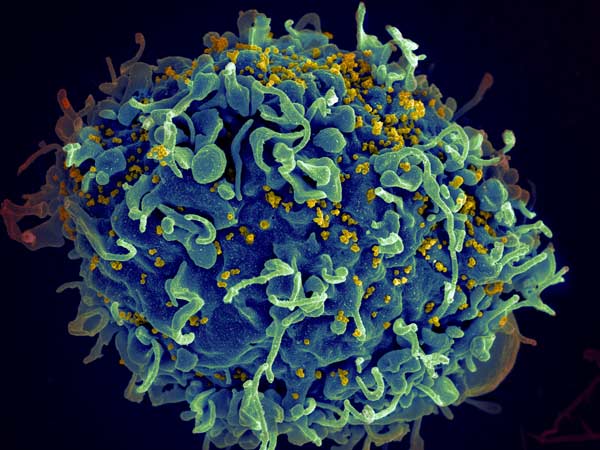
A new, more virulent and more damaging HIV variant has been discovered in the Netherlands.
Viral mutations are a source of concern because they can affect transmissibility and other factors. There have been fears of this happening in HIV-1, and now a new, highly virulent HIV strain in the Netherlands has been identified in a study. The results are published today in Science.
Prior to antiretroviral treatment, individuals infected with the new “VB variant” (for virulent subtype B) showed significant differences compared with individuals infected with other HIV variants:
- A viral load between 3.5 and 5.5 times higher.
- A doubled rate of CD4 cell decline (the hallmark of immune system damage by HIV), placing them at risk of developing AIDS much more rapidly.
- Increased risk of transmitting the virus to others.
Fortunately, individuals with the VB variant had similar immune system recovery and survival to individuals with other HIV variants. However, because the VB variant causes a faster drop in immune system strength, early diagnosis and treatment is critical.
Researching the mechanism that causes the VB variant to be more transmissible and damaging to the immune system could lead to new targets for next-generation antiretroviral drugs. The VB variant is characterised by many mutations spread throughout the genome, meaning that a single genetic cause cannot currently be identified
Lead author Dr Chris Wymant said: ‘Before this study, the genetics of the HIV virus were known to be relevant for virulence, implying that the evolution of a new variant could change its impact on health. Discovery of the VB variant demonstrated this, providing a rare example of the risk posed by viral virulence evolution.’
Senior author Professor Christophe Fraser added: ‘Our findings emphasise the importance of World Health Organization guidance that individuals at risk of acquiring HIV have access to regular testing to allow early diagnosis, followed by immediate treatment. This limits the amount of time HIV can damage an individual’s immune system and jeopardise their health. It also ensures that HIV is suppressed as quickly as possible, which prevents transmission to other individuals.’
The VB variant was first identified in 17 HIV positive individuals from the BEEHIVE project, an ongoing study which collects samples from across Europe and Uganda. Since 15 of these people came from the Netherlands, the researchers then analysed data from a cohort of over 6700 HIV positive individuals in the Netherlands. This identified an additional 92 individuals with the variant, from all regions of the Netherlands, bringing the total to 109.
The researchers estimate that the VB variant first arose during the late 1980s and 1990s in the Netherlands, spreading more quickly than other HIV variants during the 2000s. However its spread has been declining since around 2010. The research team believe that the VB variant arose in spite of widespread treatment in the Netherlands, not because of it, since effective treatment can suppress transmission.
Since individuals with the VB variant are demographically similar, the spread is likely due to the properties of the virus itself.
Source: University of Oxford

